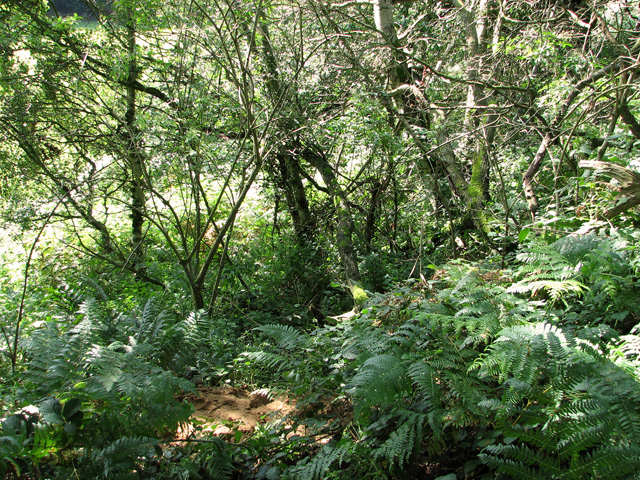The village of Stody lies approximately halfway between Fakenham and Sheringham.
| Name | Occupation | Posted from | Until |
|---|---|---|---|
| Sergeant William Davies | Farmer |
Unknown | Unknown |
| Sergeant Albert Edward High-Caston | Estate foreman |
Unknown | 03 Dec 1944 |
| Private Frederick Andrews | Farmer |
Unknown | 03 Dec 1944 |
| Private Andrew Donaldson | Unknown | Unknown | |
| Private William Kendle Emery | Farm labourer |
Unknown | 03 Dec 1944 |
| Private Ernest Robert Hazelwood | Horseman on farm |
Unknown | 03 Dec 1944 |
| Private Jack Edward High-Caston | Estate worker |
Unknown | 03 Dec 1944 |
| Private Harold Ernest Sewell | Estate worker |
Unknown | Unknown |
| Private Wallace Carol Shayler | Estate worker |
Unknown | 03 Dec 1944 |
The OB site is located on strictly private land belonging to the Stody Estate and accessed by kind permission of the owner, Mrs Adel MacNicol.
The OB was built into the side of a disused sandpit by the Patrol members themselves, on what would have been heathland in the 1940s. An RAF aerial photograph taken in 1945/46 (provided by Norfolk County Council’s E-Map Explorer) shows a much less wooded area than we see today, interspersed by clusters of trees and a strip of what appears to be mature woodland growing alongside the southern edge of the slope where the sandpit and OB site are located.
The main chamber is intact but filled with sand to almost roof-height. It measures 3.70 x 3 metres and is orientated SW/NE.
The main chamber was accessed by a ladder down a drop-down shaft that was covered with a trap door. The shaft’s earthen walls were lined with corrugated sheeting which appears to still be in place and can be seen where it has been exposed.
The top section of the shaft is missing. Presumably it was swept away, over the years, by rainwater running off down the slope. A narrow opening near the top edge of the roof of the main chamber is all that can still be seen of the entrance doorway which was also the exit. The OB had no emergency exit tunnel.
Generations of rabbits as well as foxes have created numerous burrows along the sides and on top of the OB, resulting in large quantities of sand having trickled into the main chamber and filling it to almost roof-height, leaving a crawlspace only.
The chamber appears to be inhabited by foxes that have left the remains of pheasants strewn about all over the very much raised floor.
The main chamber is of standard 3.70 x 3m size and has a curved roof made from corrugated iron sheets. Our impression is that the curve of the roof is less pronounced than observed in other OBs. The side and end walls are lined with corrugated sheeting, much still in situ.
According to Patrol member Harold Sewell, who left the Patrol when called up for regular army service, the chamber was later somewhat enlarged at the rear end in order to accommodate an explosives store, now covered by sand.
Dim light coming from two burrows above illuminates the end wall of the chamber. The corrugated sheeting lining the end wall is bent and appears to have been displaced. Two deep holes (created by foxes or badgers) can be seen leading downwards into the ground near the corners.
Because some of the corrugated sheeting lining the top of the end wall is displaced, part of the earthen wall behind it has become exposed. The wall appears to have been lined with what looks like carpet underlay or felt (presumably to keep out dampness), held in place with wire netting, before it was covered with corrugated sheeting.
According to Harold Sewell a 3-inch water pipe provided some ventilation. We found no trace of ventilation pipes.
An Observation Post was situated within sight of the OB, a short distance further to the south-west. It consisted of a dugout that was covered with corrugated sheeting and well camouflaged. The OP had a field telephone connection with the OB.
Stody Patrol
Local targets would have included London and North Eastern Railway rail line and its Melton Constable railway works - a railway maintenance and production facility which also produced items of railway furniture and station buildings at its concrete division. Midland and Great Northern Joint Railway line to the north of the village.
Training included blowing up railway lines, they had a short section of railway track on which to practise.
Patrol members were ordered to spend weekends in the OB to acclimatise themselves – they were always glad to leave on Sundays to get some fresh air.
TNA ref WO199/3389
Hancock data held at B.R.A
Evelyn Simak and Adrian Pye
We would like to express our thanks to Mrs Adel MacNicol for giving permission to access her land, to Mr Ross Haddow, the farm manager of Stody Estate, for his kind assistance and to Allen Lambert, the estate’s gamekeeper, for taking us there on a Sunday in his own free time.
Harold Sewell, Patrol member (Hunworth);
Hedley Smith (Stody);
A Hoare, Standing up to Hitler (2002);
Jeremy Norman;
The late John George Seaman (leader of Baconsthorpe Patrol)



